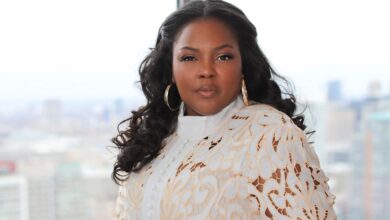News Bureau | ILLINOIS

African American actors, as well as music and culture, are now a routine presence in many commercials and other advertising. They were once nearly invisible, however, and when portrayed, it was usually as stereotypes or worse. The evolution in the black image in ads was connected with larger efforts in the movement for civil rights and equal citizenship, according to Jason Chambers, a professor of advertising who teaches advertising history. Chambers is the author of a new book, “Madison Avenue and the Color Line: African Americans in the Advertising Industry,” published just in time for Black History Month. Chambers was interviewed by News Bureau editor Craig Chamberlain.
You note that, prior to World War II, African Americans were rarely portrayed in advertising. Why was this a concern in the black community, especially given what would seem greater concerns about the lack of basic civil rights?
Well, the lack of visibility in the nation’s advertisements paralleled their invisibility in the larger society. Certainly these imagistic concerns were superseded by concerns of violence and economic and social injustice. However, blacks realized that to experience full equality they would have to receive it in all of its manifestations, including as consumers and in the nation’s advertisements.
In the rare cases blacks were portrayed in ads during that time and later, what roles were they given and why?
Well, in products like Aunt Jemima pancake mix, Uncle Ben’s rice, and Gold Dust washing powder, blacks were portrayed as experts. Their very ethnicity conveyed the authenticity of the product. Because blacks were stereotyped as being good cooks, if a black woman said a product was good then it must be so.
They were also extensively used as objects of ridicule in products like Niggerhead Tobacco. Products like these used deformed and cartoonish images of blacks with little regard that the image had any connection to the contents of the package.
Were things different in any way for black athletes and celebrities?
Black sports figures like Joe Louis, Jackie Robinson and others did have greater opportunities in the 1930s and 40s as advertising representatives for products sold to black consumers. Their images were used without the gross deformities, negativity, or stereotypes that sometimes accompanied other images of blacks in advertising.
Is there a way to categorize the major periods of change in the second half of the century? Times when advertisers made a concerted effort to reexamine their practices? Were there iconic ads that seemed to symbolize those periods, and what was important to note in their content or style?
Sure, from the late-19th into the early 20th century negative, stereotypical, and derogatory images of blacks (as well as other racial minorities) predominated. Later, from about 1920 to 1940 blacks (outside of well known images like Aunt Jemima or Uncle Ben) largely disappeared from advertising. After WWII more realistic images of blacks began to appear and later, as we entered the civil rights period, racial integration and then Black Power emerged. Finally, by the mid-1970s to the present, images of blacks as normal people with typical consumer problems became the norm.
What do you see that’s noteworthy in the ads of today, both those that feature athletes or celebrities and those that don’t?
In a positive sense, I think it’s noteworthy that blacks are being used to represent a broader range of products than ever before. For example, it has only been recently that blacks have been used to sell luxury products to a broader audience. Further, within those advertisements blacks are playing a variety of roles, from primary user to actual product spokesperson.
Some ads can seem to risk being offensive in their portrayal of blacks or black culture. Is there a key for advertisers in shaping ads that are seen as playful fun versus demeaning?
I don’t know that there is a singular key. I think that the important thing is to try to ensure that the advertisement includes the proper cultural nuances. By doing so, advertisers can signal that they are intending to laugh with the black community, rather than at it.
























































